Canadian surrealist painter Stephen Gibb takes a mind-bending look at contemporary art,
pop culture and social commentary with his painting You Are Out Of Your Mind!
Playing with “mind” idioms is one way to blow your mind.
Another is to examine the world through your mind’s eye.
If you could read my mind you could clearly see that my mind is in the gutter.
And amidst all this madness and lunacy is the real mind trap.
So take a load off your mind and get past the notion that this painting is a sick idea.
Remember that your mind is a blank slate, a blank canvas on which you create yourself,
once you’ve unlocked your mind from your rigid mind set and escape your demons…
at least until you forget what you are doing, since you have a mind like a sieve.
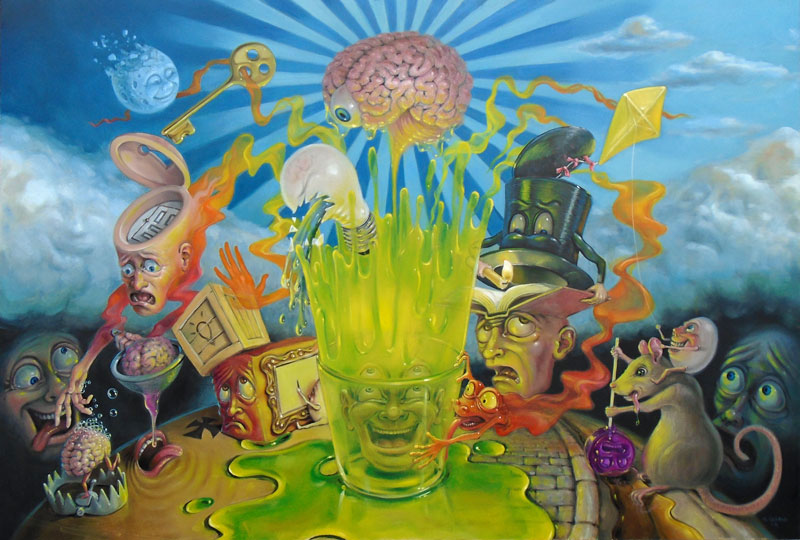
 Return to main gallery
Return to main gallery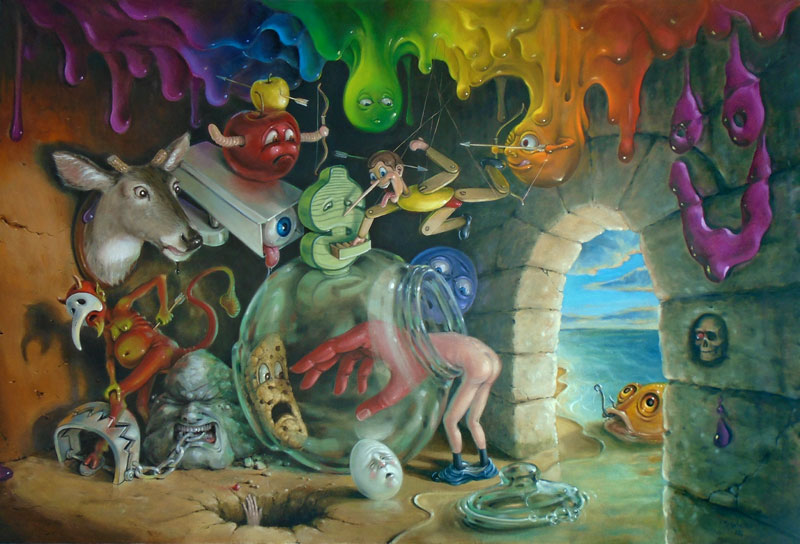
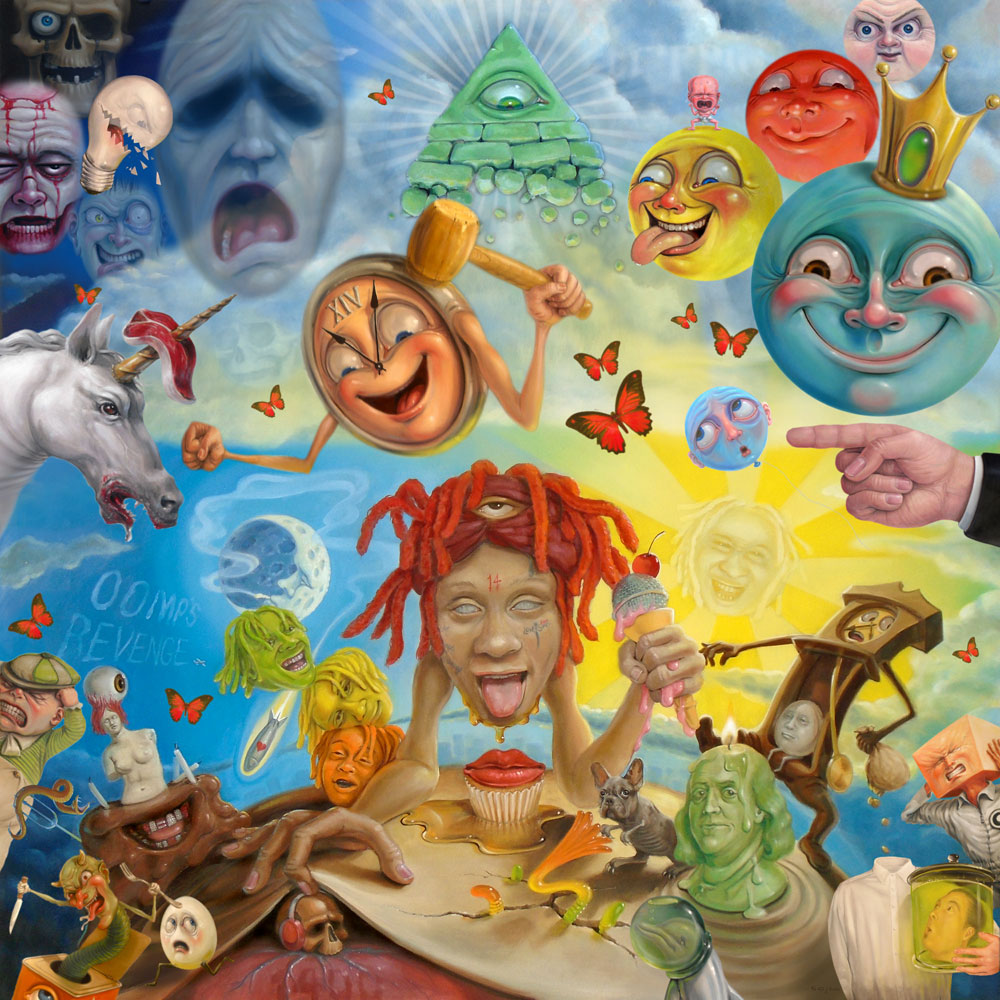
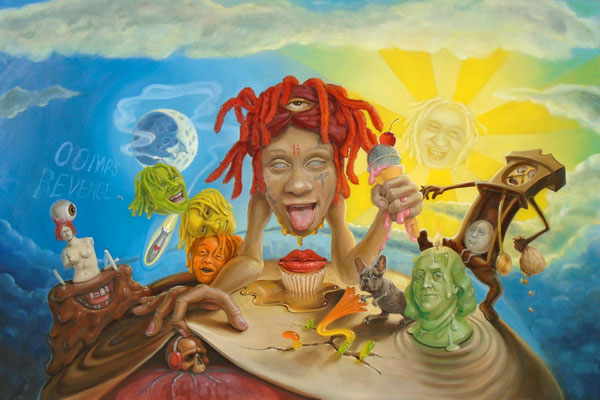
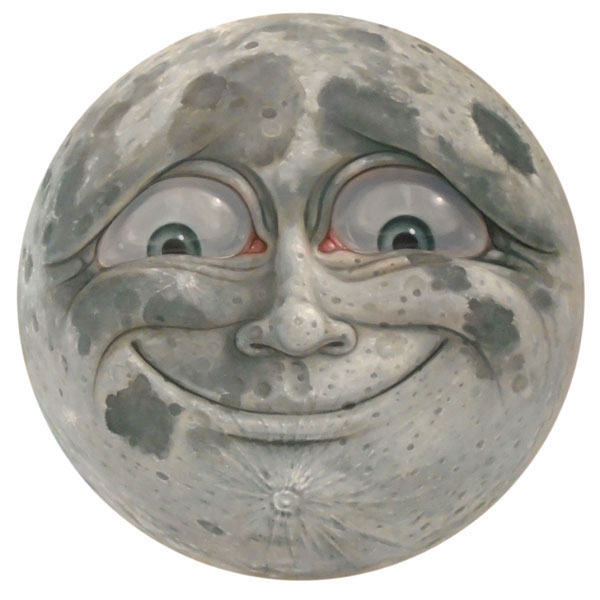
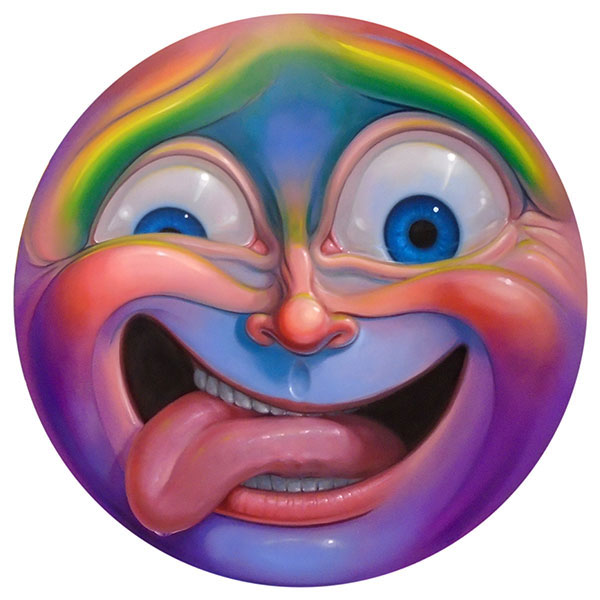

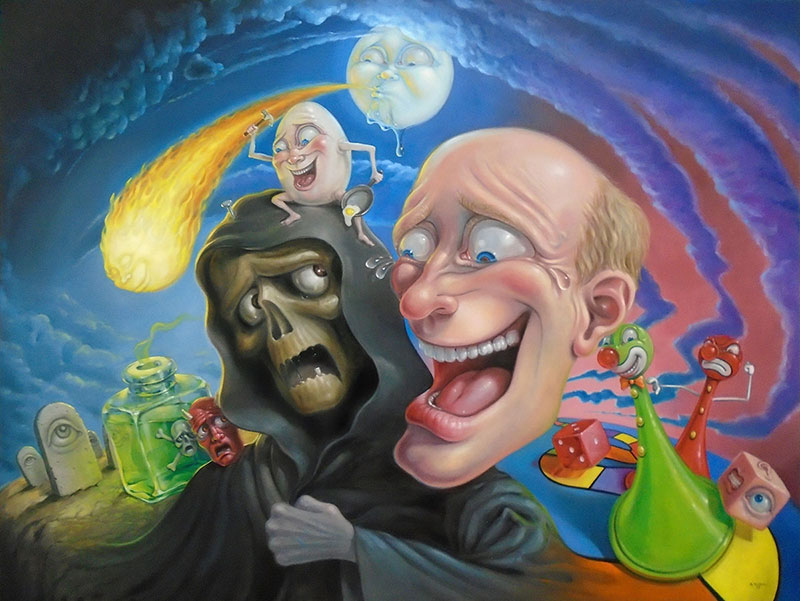
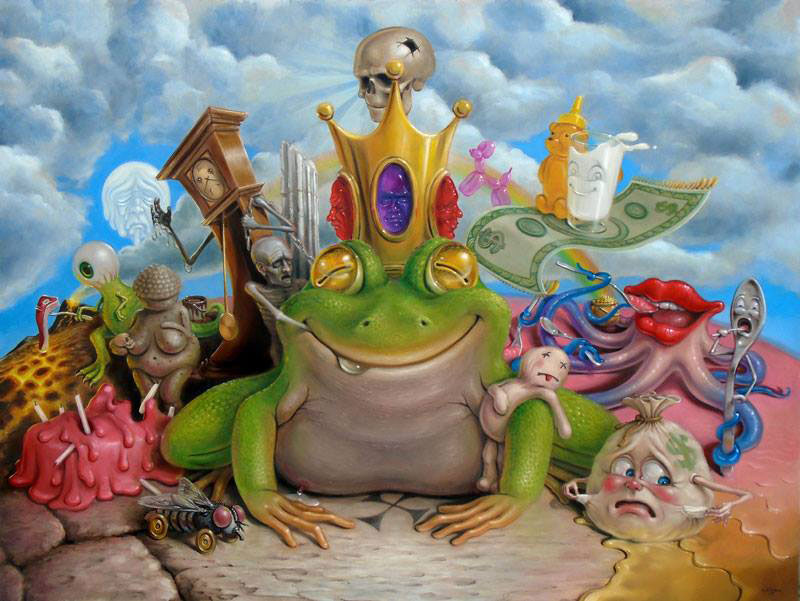
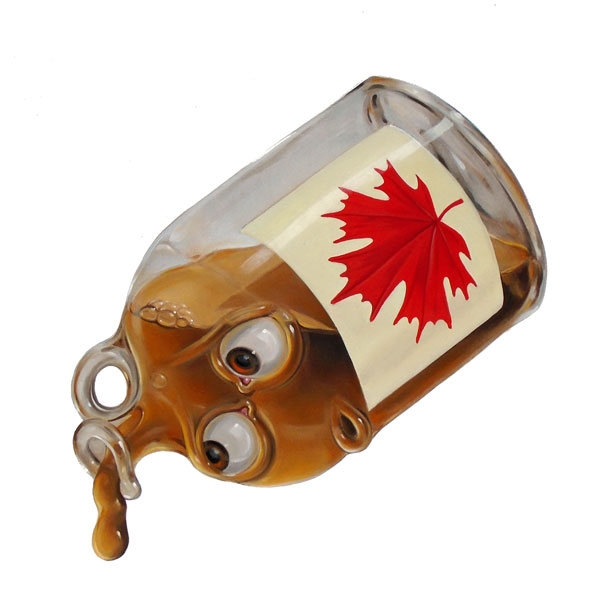
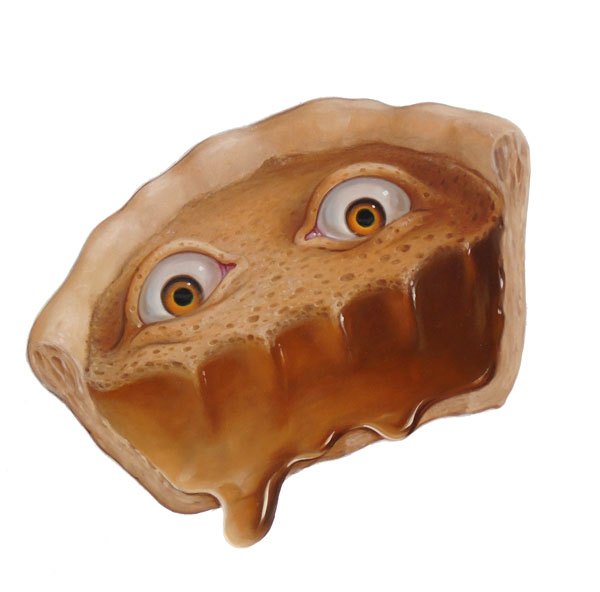
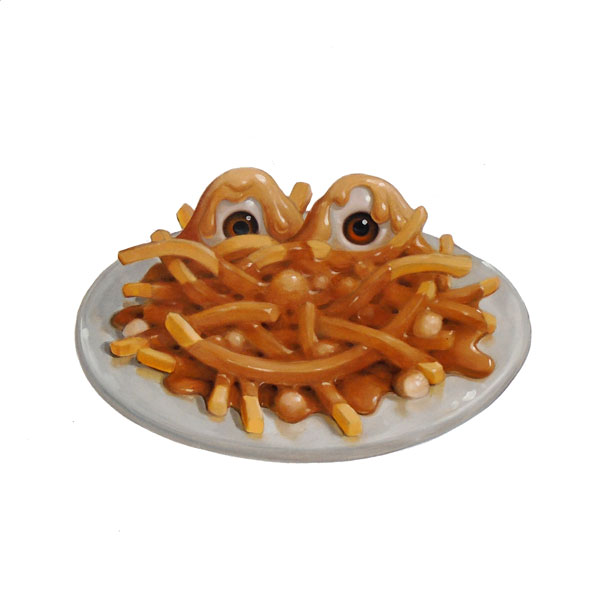
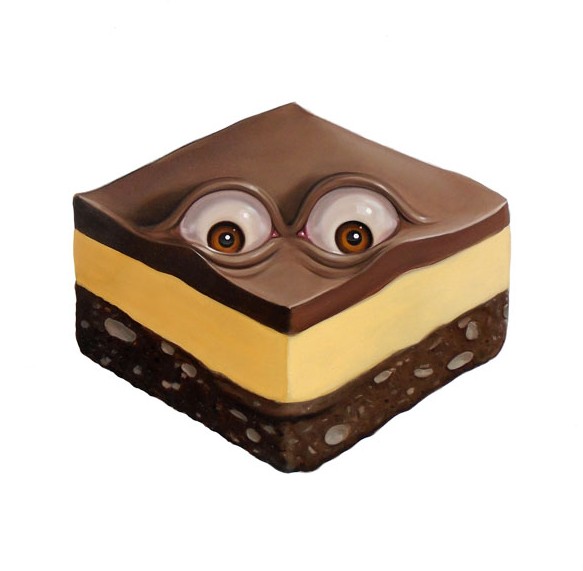
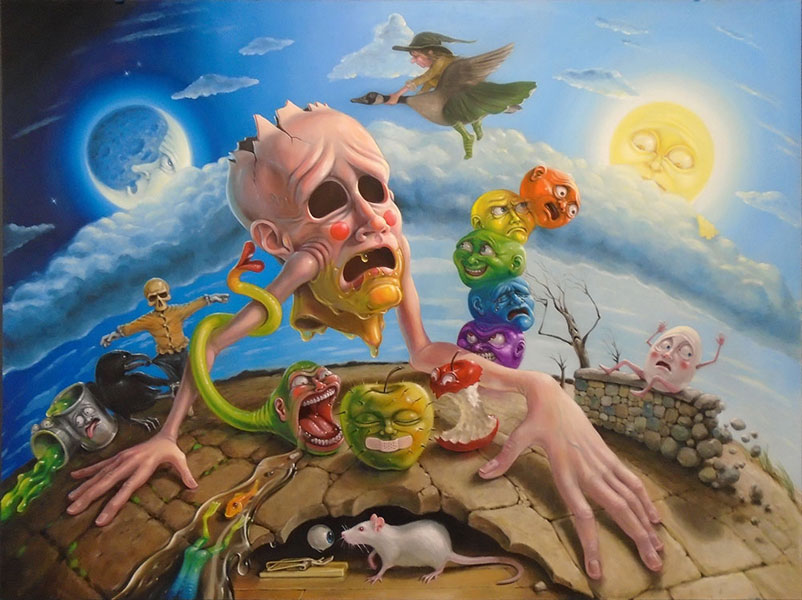
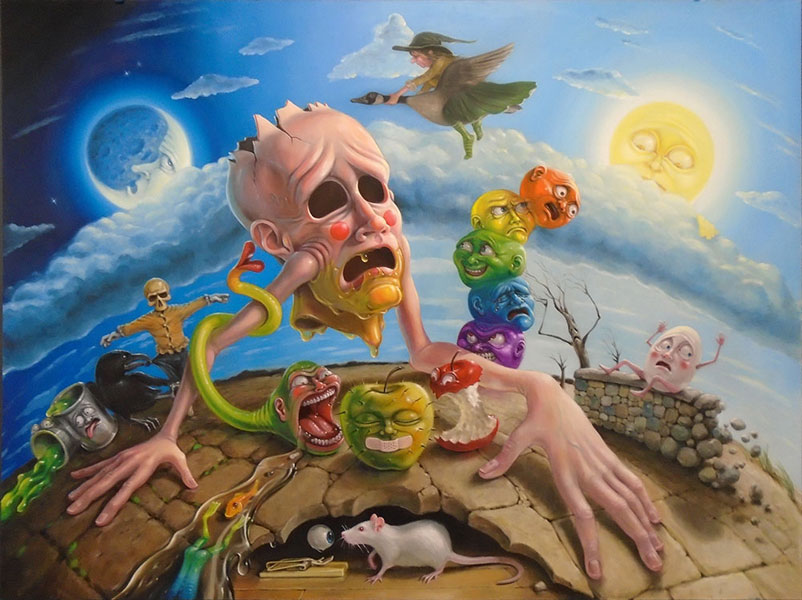

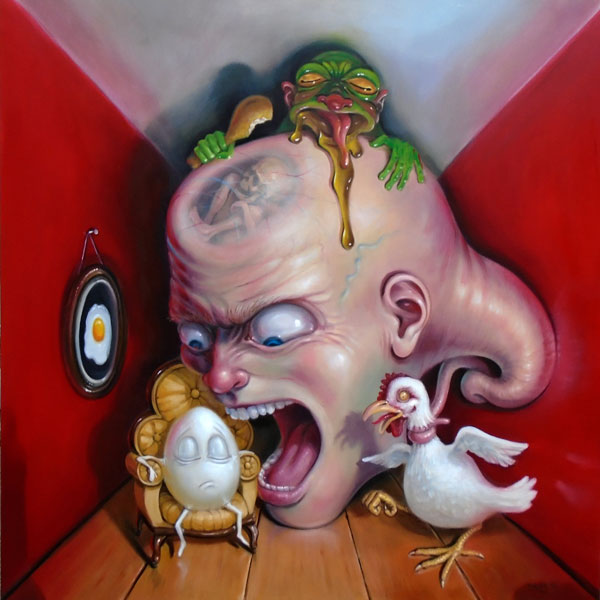
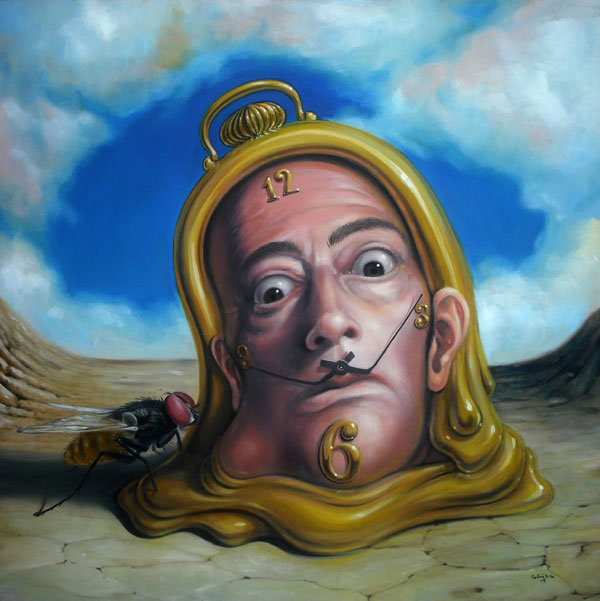
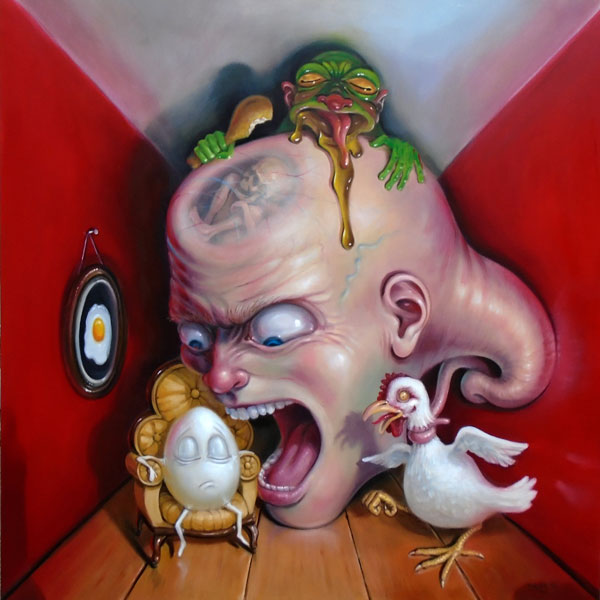
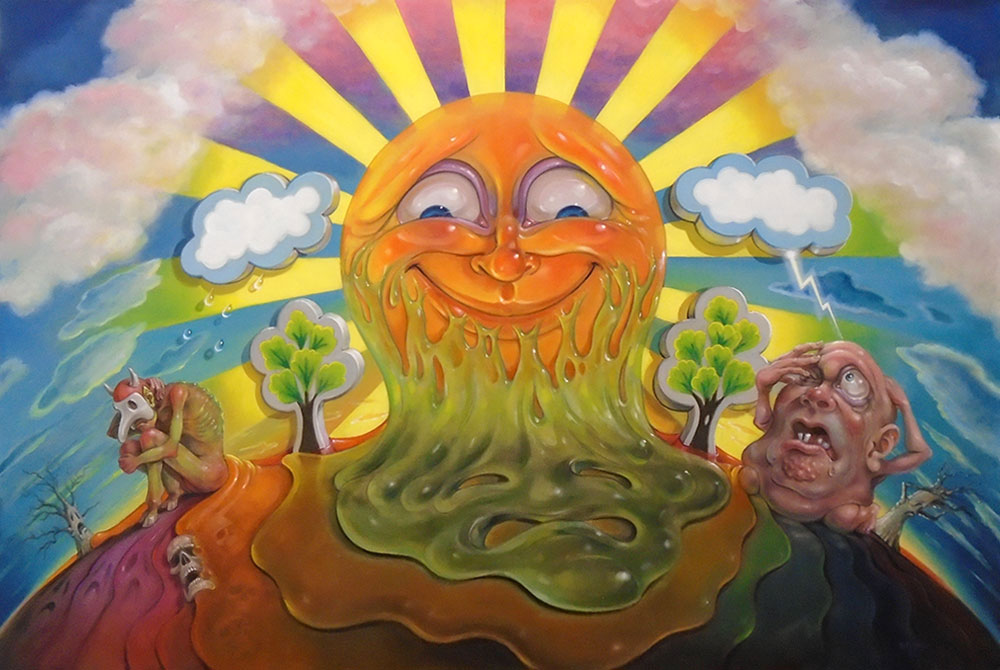
Contemporary artist takes a look at loss
Contemporary artist is lost in the wilderness…
Pictorial Puzzles for a Post-human Paleontologist, Stephen Gibb, 36″ x 24″, oil on panel, 2018
Framed around idioms of loss it is easy to lose your mind or your marbles trying to unravel the mystery. Don’t lose your cool or your head since most things can get lost in translation. Simply submit to the swirling flow of logic and when you feel like you are losing your footing or your direction steer clear of the lost souls and head back for solid ground. No one loses face for trying.
In his continuing series of hyper-coloured, mind-blowing adventures in pop surrealism, pop art and improbable contemporary art, Gibb has established a brand of imagery that pulls you in many directions. Juggling a chainsaw of pop culture, a bowling ball of absurdity and a feather of neuroscience he delivers a head-spinning smorgasbord of social commentary and sly humour on a platter, with an assortment of psychedelic desserts.